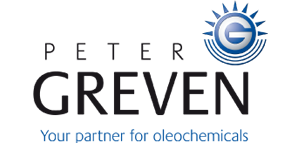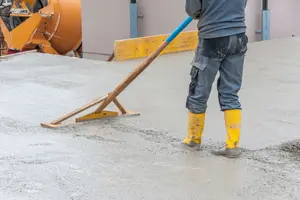
GREVEN INSIGHTS CONSTRUCTION: Concrete Hydrophobization
Concrete requires different hydrophobization than, for example, plaster or mortar. Mixing often takes place in liquid form which makes a liquid water repellent almost indispensable. Common reasons for using hydrophobing agents during concrete production are the reduction of carbonation processes, cold bridges, microorganism infestation and salt blasting as well as the prevention of cracks in the building fabric. Besides that, there are two major problems for concrete which can be solved with the right additives: Preventing attack of steel reinforcement and reducing efflorescence.
Water, especially salt water, can have an impact on concrete with steel reinforcement. Dissolved chloride ions, for example, can get in touch with the steel parts and cause corrosion. This disrupts the strength of the material and damages the structure. The best way to prevent this negative influence is to inhibit the absorption of water into the material. An additional benefit can be granted by using hydrophobing agents that also form a chloride ion barrier.
Efflorescence appears as an unwanted light-coloured salt film on the concrete surface. It can be classified as primary, secondary or tertiary. Primary efflorescence occurs during the drying process of concrete as water evaporates and leaves salts from inside the material at the surface. Secondary efflorescence is caused by external water penetration, e.g. condensation or rain. Tertiary efflorescence can occur, if the concrete is placed on a water absorbing ground, e.g. soil, while still being exposed to water penetration from the other side, e.g. condensation or rain.
In order to prevent the negative effects mentioned above, impregnation, mass hydrophobization or the application of an external protective layer, e.g. paint, can be considered an appropriate solution.
Taking a closer look at mass hydrophobization, siloxanes, silanes, various types of waxes or oleochemicals are commonly used. When it comes to oleochemical hydrophobing agents, either alkaline soap solutions, metal soap dispersions or fatty acid suspensions can be considered. They are particularly suitable for the use in concrete applications as they do not only exhibit hydrophobing properties but also have a liquifying effect and thus lead to reduction of capillaries.
All three product groups are suitable mass hydrophobing agents but have different strengths, of course still depending on the concrete formulation: Metal soap dispersions excel with their strong hydrophobic properties while alkaline soaps are more suitable for impregnation or liquefaction and fatty acid suspensions are the best choice to prevent primary efflorescence. It is also possible to combine the individual product groups to create various synergy effects.
Our product manager Gabriel Kehren is available for technical discussion related to concrete hydrophobization at any time!


